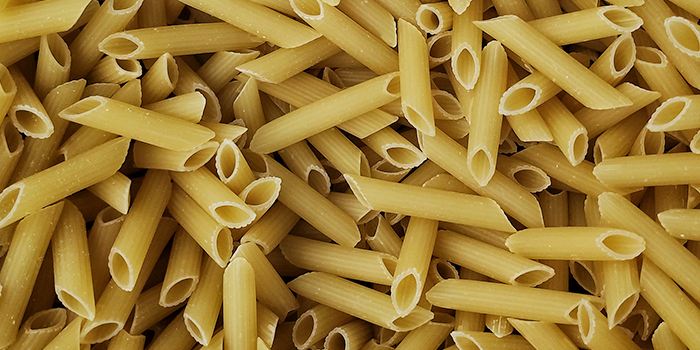Our bodies get energy from the food we eat, specifically the calories in the food we eat. Those calories come from three sources known as macronutrients: carbohydrates, protein, and fats. We need all three macronutrients in a healthy diet to function.
To prevent or manage type 2 diabetes, however, it’s important to understand how each nutrient affects our bodies and which foods are the best sources for each. Because the more you know, the easier it is to keep The Beast away.
Carbohydrates

All carbohydrates produce energy, but quickly digested simple carbohydrates cause bursts of energy that don’t last. Complex carbohydrates take longer to digest and therefore supply energy over a longer period.
Carbohydrates aren’t all bad. In fact, some kinds of carbohydrates, like fruits and whole grains, are good for us from our bellies to our brains. They can help fight depression and improve our memory and attention. And appropriate amounts of the right kinds of carbohydrates can help us lose weight and keep it off. But too much of the wrong kind will raise our blood sugar levels.
Carbohydrates are the sugars and starches in many different kinds of food. Our bodies turn those sugars into glucose in the bloodstream. An A1c test measures the amount of that glucose, or blood sugar. Our bodies turn blood sugar into energy to move, grow, and heal. If that energy is not used, the body stores it as fat. And excess blood sugar that remains in our blood can eventually lead to prediabetes or type 2 diabetes.
There are two kinds of carbohydrates: Simple and complex. The difference is that sugars in simple carbohydrates are digested more quickly than in complex carbohydrates. Simple carbohydrates contain just one or two types of sugar and are found in dairy products and processed foods like candy, soda, pastries, and white breads. Complex carbohydrates are chains of three or more sugars and are found in vegetables, fruit, and foods made with whole grains. The longer the chain, the more time it takes to digest the carb.
All carbohydrates produce energy, but quickly digested simple carbohydrates cause bursts of energy that don’t last. Complex carbohydrates take longer to digest and therefore supply energy over a longer period. Foods with complex carbohydrates also tend to be high in other nutrients your body needs. Those with simple carbohydrates aren’t nutritious and are usually high in calories. So wherever you can, be sure to rely most on complex carbohydrates as the healthier option in your diet.
Fats

Saturated fats are unhealthy fats. These fats are solid at room temperature. They come from red meats, coconut oil, dairy products, and the oil used for fried foods.
Fats are also a necessary nutrient. They are another source of energy, help you absorb certain vitamins, and can keep you feeing full and satisfied. There are three main types of fats: unsaturated, saturated, and trans fats.
Unsaturated fats are healthy fats. These fats are liquid at room temperature. They can be found in avocados, fish, nuts and seeds, olive and peanut oils. They can help reduce bad cholesterol levels and increase good cholesterol levels, decreasing the risk of heart attacks and strokes. Look to unsaturated fats as the foundation of your diet.
Saturated fats are unhealthy fats. These fats are solid at room temperature. They come from red meats, coconut oil, dairy products, and the oil used for fried foods. They raise bad cholesterol levels and can increase your risk for heart disease and type 2 diabetes. So substitute them with healthy unsaturated fats like cooking with olive oil instead of butter, drinking non-fat milk instead of whole milk, or sometimes eating fish instead of steak. Enjoy these fats in moderation.
Trans fats are another kind of unhealthy fat. These man-made fats are found in fried fast foods, packaged baked foods, and processed foods like frozen pizza and margarine. Trans fats raise bad cholesterol levels and decrease good cholesterol levels, increasing your risk for developing type 2 diabetes and heart disease. If just 2 percent of your daily calories come from trans fats, your risk of coronary heart disease jumps by 23 percent. You’ll know a food contains trans fats when you see “partially hydrogenated” or “hydrogenated” vegetable oil in the list of ingredients. Avoid these fats by reading labels.
Fats provide more calories than the other two macronutrients. Eating too much fat can lead to weight gain, making it harder to control the level of blood sugar in your body. So remember to keep portions at a single serving.
Protein

In the U.S., most people already eat a high-protein diet – as much 50 percent more than we actually need. So, you may not need to increase the amount of protein you eat, but choosing the right sources is important.
The third macronutrient is proteins, which we need to fight infection, heal wounds, grow muscles, and keep our bones strong. Protein helps us lose weight by making us feel full quicker and longer and helping to burn calories.
In the U.S., most people already eat a high-protein diet – as much 50 percent more than we actually need. So, you may not need to increase the amount of protein you eat, but choosing the right sources is important. Look for high-protein foods that aren’t also high in saturated fat. These include eggs, almonds, peanuts, chicken, turkey and lean beef, fish and shrimp, Greek yogurt, broccoli, lentils, oats, and quinoa. Avoid protein sources that are high in saturated and trans fats, including processed meats like ham, bacon, and hot dogs.
Our bodies get energy from the food we eat, specifically the calories in the food we eat. Those calories come from three sources known as macronutrients: carbohydrates, protein, and fats. We need all three macronutrients in a healthy diet to function.
To prevent or manage type 2 diabetes, however, it’s important to understand how each nutrient affects our bodies and which foods are the best sources for each. Because the more you know, the easier it is to keep The Beast away.
The right mix of macronutrients
How much of each of the three macronutrients do you need? While different for everyone, all of us need these three macronutrients in our diets. Your doctor or nutritionist can help you figure out the right mix of carbohydrates, fats, and protein for you to prevent or manage type 2 diabetes. You’ve already accomplished the first, most important step of learning more. And every step forward makes a difference.




